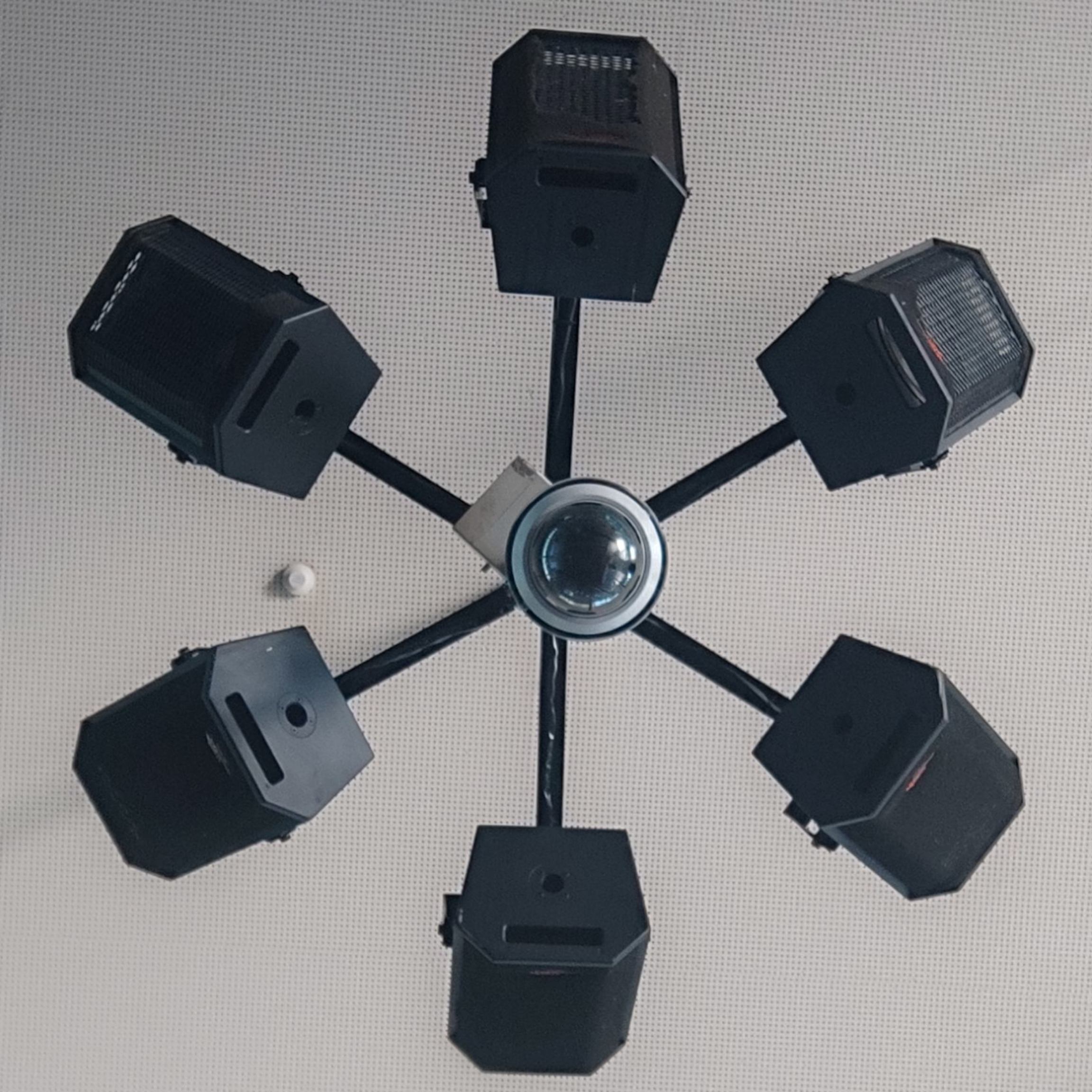Arch is aimed at people who know their shit so they can build their own distro based on how they imagine their distro to be. It is not a good distro for beginners and non power users, no matter how often you try to make your own repository, and how many GUI installers you make for it. There’s a good reason why there is no GUI installer in arch (aside from being able to load it into ram). That being that to use Arch, you need to have a basic understanding of the terminal. It is in no way hard to boot arch and type in archinstall. However, if you don’t even know how to do that, your experience in whatever distro, no matter how arch based it is or not, will only last until you have a dependency error or some utter and total Arch bullshit® happens on your system and you have to run to the forums because you don’t understand how a wiki works.
You want a bleeding edge distro? Use goddamn Opensuse Tumbleweed for all I care, it is on par with arch, and it has none of the arch stuff.
You have this one package that is only available on arch repos? Use goddamn flatpak and stop crying about flatpak being bloated, you probably don’t even know what bloat means if you can’t set up arch. And no, it dosent run worse. Those 0,0001 seconds don’t matter.
You really want arch so you can be cool? Read the goddamn 50 page install guide and set it up, then we’ll talk about those arch forks.
(Also, most arch forks that don’t use arch repos break the aur, so you don’t even have the one thing you want from arch)
Meanwhile random people just using SteamOS and being happy.
yea, but I feel like it’s worth saying that steamdeck (where most of the steamos instances are) runs primarily in steam mode, and runs immutable OS by default so it’s pretty hard to actually mess that up. Plus steam manages most updates for you instead of you managing the updating yourself, which also helps remove the skill factor.
Android looks at SteamOS from the distance
SteamOS falls into the category of about 2 arch forks that have a reason to exist.
Don’t know about Cachy but Endeavour is not even a fork. It’s just Arch with a fancy installer.
And nice gui apps, default settings, nice community and cool branding.
Didn’t both distros have Btrfs auto snapshots. Same as Garuda. Anything broken? Just a reboot, arrow keys, and rollback.
EndeavorOS is not automatic but you can set it up with one terminal command.
Any windows power user or dev on a mac can follow a wiki, read a bit and learn.
Good for beginners? I didn’t describe a beginner right here. Anybody with experience in computing will find arch straightforward and satisfying. Heck, a CS student would probably go through a first install process faster than I do after 5 years.
What are the concept involved? Partitioning, networking, booting… These are all familiar fields to tons of very normal computer users.
Arch can be a good first distro to anyone who knows what a computer is doing (or is willing to learn)
just because a given person could make it work, doesnt mean they want to. i can personally fix a lot of these issues, but i dont wanna have to bother. i just want to accomplish the inane bullshit i turned my computer on for.
i just think an arch recommendation should always come with that disclaimer. newbies have to know what to expect else they will associate that experience with linux in general.
You’re focusing too much on the installation process, if installing Arch was the whole of the problem things like Endeavor would be a good recommendation for newbies, but they’re not. Arch has one giant flaw when it comes to being beginner friendly, and it’s part of what makes it desirable for lots of us, and that is the bleeding edge rolling release model. As a newcomer you probably want something that works and is stable. Arch is not, and will never be, that, because the core philosophy is to be bleeding edge rolling release. If you’re a newcomer who WANTS to have that and doesn’t mind the learning curve then go ahead, but Linux has enough of a learning curve already, so it’s better to get people started with something they can rely on and afterwards they can move to other stuff that might have different advantages/disadvantages.
We’re talking about the general case here, I’ve recommend Arch to a newcomer in the past, he was very keen on learning and was happy with reading wikis to get there stuff sorted, but realistically most people who’re learning a whole new OS don’t want to ask questions and be told RTFM, and RTFM is core to the Arch philosophy.
The first Linux I used wasn’t part of any distro. A few years later I compiled Slackware to run bind and Sendmail.
Last year I tried Arch in a VM. I got to where it expected me to know what partitions to create for root and swap and noped out. It’s not 1996. I don’t have time for those details any more. No one should. Sane defaults have been in other distros for decades.
one of the main points of arch is for people wanting to learn these details. its not for everyone.
if you want a distro to just work, i second the suggestion from the other dude. get a debian based one.
I would, however, recommend Arch if you’re a Linux novice looking to learn about Linux in a more accelerated pace.
Or Void Linux.
deleted by creator
I’m very interested because the name is cool
Lol I love the honesty
I think their documentation is pretty solid, for everything else the reddit/internet searches can solve it. But as with EVERY DISTRO on this planet, the archwiki can be applied! You just need to know what are the differences from void to arch. (no systemd for example)
For novices Void is worse because it does not have the Arch wiki. The Void Docs are brief and you will inevitably end up reading the Arch wiki anyways, except you will run into Runit specific bs.
Runit specific bs? You mean being simple and sane? lol And yes reading documentation is true for both. Also be aware of context.
Not talking about the quality of the software. I mean that some guide on Arch wiki will not work because some software expects systemd or the guide is just more difficult to follow with a system using runit. My point is that a new user does not have “the context”, so for a new user Void is a worse way to learn linux quickly than Arch or honestly even Gentoo. Even Gentoo has its own wiki so it’s likely that if an Arch wiki guide does not work for you, you will likely find the Gentoo specific detail on their wiki. You don’t have such luxury with Void.
So basically because Archwiki doesn’t cover runit related stuff (I am not even sure about that) Void is not recommended as distro for learning more about linux. Makes no sense to me sorry.
It’s not recommended because there are better options ie. Arch, not that it would be impossible to learn linux using Void. Arch simply has better documentation than Void. Which is important when you want to learn fast. My previous comments provided examples why the documentation is worse.
Btw arch wiki does provide documentation for runit but only on its runit page, not on every page that mentions managing a service.
On the contrary, I’d still argue it’s a good distro for beginners, but not for newbies. people who are tech-sawy and not hesitant to learn new things.
I jumped straight into EndeavorOS when I switched to Linux, since arch was praised as the distro for developers, for reasons.
Sure, I had some issues to fight with, but it taught me about all the components (and their alternatives) that are involved in a distro.
So, once you have a problem and ask for help, the first questions are sorts of “what DE/WM do you use?.. is it X11 or wayland? are you using alsa or pipewire?”.
Windows refugees (like me) take so many things for granted, that I think this kind of approach really helps in understanding how things work under the hood. And the Arch-wiki is just a godsend for thst matter. And let’s be real, you rarely look into Arch-wiki for distros other than Arch itself, since they mostly work OOTB.
I’d just like to vent that these kind of discussions are one of the big turnoffs of the Linux community in general. People speak “in absolutes”.
You either do it this way or you’re a dumbass. You either use the distribution I like or you’re doing it WRONG. You shouldn’t use Arch because you’re not experienced enough, you should use Mint for an arbitrary amount of time before you graduate to the good stuff.
You friends get way too worked up over other people’s personal preferences and push your biased and subjective views as facts.
Is Arch Linux the right fit for a newbie to Linux? The right answer is “it depends”, not “never”. Would I recommend Arch to my mom? No. Would I recommend it to my programmer colleague who already lives in the Powershell? Sure, why not.
Is Arch Linux the right fit for a newbie to Linux? The right answer is “it depends”, not “never”. Would I recommend Arch to my mom? No. Would I recommend it to my programmer colleague who already lives in the Powershell? Sure, why not.
Yup, i had a lot of people tell me that arch wasn’t a good beginner distribution, and had some friends try to talk me out of it. But i was planning to move to Linux for over a year and had set up Linux servers in the past. Just hadn’t used one for my main PC. I’ve been on arch for over a month and it’s been fine. I still wouldn’t recommend it to every beginner but I’m not going to say it’s never appropriate.
I know someone who was fed up with Windows recently, and they decided it’s finally time to switch to Linux. Me and another person recommended Linux Mint, but they got many other recommendations for Arch. They went with Arch, and it hasn’t gone boom yet, but I’m not sure if it’s a matter of time or what.
I have heard Arch is more “stable” these days than it used to be, but I’m not sure.
I use Ubuntu myself except for on my ThinkPad where I use Mint, and I’m gonna switch to Mint on my desktop eventually.
Once it’s installed Arch is just as easy to use as any other distro. It’s “unstable” because it’s rolling release, sometimes issues crop up with bleeding-edge updates, just keep an eye on the forums before updating.
I’ve only had to deal with a broken system a couple of times, both were 100% my fault, and both were fixable without reinstalling. Even when something breaks it’s pretty forgiving, as long as one is paying attention and not afraid of reading documentation.
sometimes issues crop up with bleeding-edge updates, just keep an eye on the forums before updating.
So to me, that sounds not ideal for someone new to Linux.
Depends on the person. Someone who just wants a stable desktop that works? No. Someone who wants to learn how Linux works, and likes to tinker? Yes.
I think the difficulty with Arch is not about using the command line, but about knowing the Linux ecosystem.
People coming from OS X or Windows probably don’t know the difference between a WM, or a DE or what Display server they should use.
They don’t know if they need to install a network manager or setup sudo on a new system.
These things come from experience of using a Limix system even a mainstream one like Ubuntu.
Different people deal with things in different ways. Some (most?) people feel like learning linux is undesirable or a chore, while others embrace the sense of discovery and exploring a new and exciting thing. After using Windows for decades I don’t want the same experience, I want something completely different.
Before I installed Linux I played a bunch on a virtual machine. I installed several distributions, desktop environments, hardware compatibility. I ended up landing on EndeavourOS more than a year ago. Never borked my setup, never had update problems, never had a problem I couldn’t solve (more like Arch Wiki solving it for me).
I like to learn things by doing things, I like to fail fast and learn from the mistakes. EndeavourOS provided the exact experience I was looking for and would recommend it to someone with a similar mentality. I wouldn’t recommend Arch (or arch based distros) to people who aren’t tech savy, but people make it seem more complicated and brittle than it actually is.
“I didnt read the changelogs”
I have never read the changelogs and I have never broken my EOS install ever.
Weak bait.
- Arch users everywhere: You MUST read the Arch news files before updating.
- Also Arch users when updating: Oops, I forgot to read the news file.
- pacman when updating: I have pre install hooks but I don’t print the news files updates by default because that’s probably bloat or something.
Make it make sense
while you do have a point, i’m still having issues with taskwarrior printing it’s update notifications, even after opening an issue and the maintainers patching it.
The thing is, i use arch on 3 different devices, and i don’t need to see every news entry 3 times, so yes in my case having it as default in pacman would indeed be bloat.
That said, there is PLENTY of places where I think arch could have saner defaults. but the beauty of arch is that it is made to be configured exactly the way you like it, so you really can’t fault arch as much in this case, compared to other distros that try to take all decisionmaking away from the user.
You can never be 100% certain the news file didn’t update between the three invocations. If you aren’t refreshing that page between invocations then you aren’t actually using Arch the way it was designed.
well you can never be 100% certain your laptop won’t spontaneously die either.
for any new arch user, i do recommend keeping an archiso live USB around in case something really does happen - since every arch user should know the basics of how it works, it should be easy enough to recover as well.
knowing that, i really only check the news out of curiosity, since i’m not a grub user i haven’t had arch be unbootable since i started using it years ago. even if it did i’m confident enough it’d be a quick fix.
Then I never want to see you telling someone they should’ve checked the news file before updating!
Removed by mod
That was solved in about 10min with a liveusb and replacing grub with systemdboot
Try explaining that to a newbie
I am not a newbie and wouldn’t even know how to do it without using a manual (archwiki)
You would, it’s very very straightforward they made it very simple. I literally walked multiple non-technical users through it when it happened because I have moved some of my friends and family to Linux. I won’t say that it wasn’t tedious and that it wasn’t annoying for them but they got through it just fine
Granted that for most newbies doing archchroot from a live USB is complicated enough to reinstall. In any case, as you said, systemd-boot works fine and it’s the default now in EOS so who cares.
For example a friend of mine decided to reinstall bazzite because he changed his GPU from nvidia to amd, when and uses the default drivers… Yes a simple search in bazzite’s download page shows the three coands that have to be executed to rebase the system to the non nvidia one if you like having extra space but… A full reinstall is crazy.
I stopped using grub after that pain in the ass
Veterans will always go back to Debian. It is inevitable.
Debian is just the carcinization of Linux.
Im like 2 grub breaks away from going back lol
I’ve got 25 years of Linux usage under my belt at this point, and I’ve settled on Debian for all PCs, servers, and anything else. Stability is so much more important to me than bleeding edge software, but for those things that absolutely need the latest and greatest, there’s Backports and Flatpak.
Preach greybeard
I’d rather use windows 7 than ever go back to Debian … something with 7 being the last good version of anything ;)
It makes sense because if you are a veteran, you probably already have your workflow streamlined, so you don’t need new software in the repositories.
My first distro was an Arch fork and I moved to vanilla Arch a year later. My problems in that time have been minimal. Personally, I am glad that someone recommended that I use an arch-based distro as a beginner. Mind you, I came in as a modestly computer-literate Windows refugee willing to learn. I think for those types of people it can be appropriate to recommend Arch-based distros.
So, yes, if you are not willing to google a problem, read a wiki, or use the terminal once in a while, Arch or its forks are probably not for you. I would probably not recommend Arch as a distro for someone’s elderly grandparent or someone not comfortable with computers.
That said, I do not know that I agree with the assertion that Arch “breaks all the time,” or that I even understand what “Arch bullshit®” is referring to. This overblown stereotype that Arch is some kind of mythical distro only a step removed from Linux From Scratch has to stop. None of that has been my experience for the last 4 years. Actually, if anything, it is the forks that get dependency issues (looking at you, Manjaro) and vanilla Arch has been really solid for me.
I came in as a modestly computer-literate Windows refugee willing to learn
That’s like 2% of the people who want to switch to Linux
How so? I see plenty of posts by folks who recently switched from Windows, and I imagine the ones who are willing to take that leap in the first place lean towards the more tech-literate side.
“Willing to learn” is more subjective, perhaps, but I do not think my case is that uncommon.
I’d argue the demographic that writes posts about switching their OS is more likely to be happy switching to Arch than most of the people who switch. The way I imagine the average Linux noob is a university student who installed Ubuntu for their coding class.
Arch is aimed at people who know their shit so they can build their own distro based on how they imagine their distro to be.
Is Arch only for people who know how to seek help? Maybe. But it absolutely is not a distro template. It’s a distro.
A package manager + some packages in the base system maybe, is basically a distro template. And maybe some kernel tweaks, or a built-in DE/WM. Or opinionated init system maybe.
There are so many more aspects of Arch that you conveniently ignored. The filesystem hierarchy, the special compilation arguments options tweaks and configuration for e.g. dynamic linking, and how Arch has way more packages than just “some packages in the base system”. And no, I don’t mean the AUR. Arch is no less of a distro than any other distro. What is a distro if not a large swathe of packages meticulously tweaked to interop gloriously?
“Conveniently?” I’m not making a case against Arch. I’m literally using an Arch derivative. Just not trying to sit here listing every single customization they ever made. Chill the fuck out.
I just don’t understand how someone can claim that Arch is a “distro template”.
Cause there’s like six other distros based on it. The point is that a package manager especially is a huge part of what differentiates the general experience of using a distro, and how a derivative distro works. And sure, lots of other details. Something like Manjaro, Artix etc. is basically cut from Arch as a template, often incorporating upstream changes or packages, with downstream changes based on differences of opinion.
Ubuntu has over 100 forks. Is Ubuntu a distro template? Something being forkable merely means that it is libre software.
I don’t think this is a well-defined term, so not much point in arguing about its definition.
people who unironically recommend anything arch-based (haha yes steamos is based on arch, yes you’re very very clever, i’m sure you can even figure out why it’s an obvious exception if you think about it for a minute) are just detached from reality and simply want to be part of a group.
The only time arch is suitable for beginners is installing it in a VM to learn linux via brute force, after you’ve gotten used to going through that process you’ll have a very solid base of knowledge for using a more suitable distro.
Linux Mint.
And then wonder why everybody having a good time with their nvidia on smooth wayland vs you on your
ancient, ok now only old Kernel since the last ubuntu upgrade, and outdated nvidia drivers.Oh wait, with mint, you are forced to use clunky Xorg aren’t you
I am sure that gives any noob the vibes of using a modern OS like windows/macOS /s
I’m not sure a newcomer will notice the difference between xorg and wayland?
If you have multiple monitors with different refresh rates, you’ll notice immediately.
I did, before I knew what wayland is, I did some distrohopping (see path below), and recognised that sometimes it feels more nice than other times. First I thought it was just GPU driver stuff, but later learned that it was something called wayland that does something underneath your desktop management (didn’t know that there is another layer below at that time)
(mint->manjaro->manjaro(after it died once)->Opensuse TW(after manjaro died again)->Arch(because I liked installing from AUR more than from suse community hub)->EndeavourOS(because I don’t have time to do Arch manually and archinstall was to difficult/time consuming with dualbooting macOS)
wayland is still too unstable for me to recommend. what is clunky about xorg?
Do you use a modern kernel? And, do you use a multi touch trackpad? That only works on wayland well.
I personally see the difference in for example window movement Xorg VS wayland. And I have more artefacts from window manager if use Xorg BS when O use wayland.
yes, yes, and it works without tearing in xorg no problem. multitouch is not xorgs nor wayland’s responsibility.
Umm no. Xorg only knows keyboard and pointer devices
Everything must be put into one of those in hacky ways to work with Xorg, meaning you using a protocol for a device that can move itself, scroll and register clicks and keyboard to multitouch efects
This, for example, results in swiping on Xorg is just clicking a keyboard shortcut, while in wayland you can smoothly scroll for and back between the virtual desktops mid animations
Mint works like Windows and has a lot to offer any Windows 10 user who’s already using FOSS. And tbh Hypnotix alone justified the install of Mint for me. I got a great IPTV viewer, plus a PC that runs everything I want.
Note: I only regularly want Discord, Firefox, Endless Sky, OpenTTD, RetroArch, and LibreOffice. I’m sure everyone else has different goals.
Windows 10 doesn’t feel like a modern OS…
Then whatever a modern OS is under your model is not an OS I’m willing to use. I’ve seen Win 11. I’m going to stick with 10, as I stuck with XP through Vista, had a second machine with 7 through 8(.x), and then surrendered and used Win10 when the 32-bit Win7 machine finally stopped working for love or money.
Well that is fair and I am very glad that Linux still offers you what you need and that you are fine with using X and have (still) more compatibility like this 😇
I do not recommend Arch to new users but I really wish people would have a point supported by evidence when they post.
There is no 50 page manual to install EndeeavourOS or CachyOS, the two distros mentioned in the graphic. Both are as easy to point and click install as Fedora and maybe easier than Debian. The better hardware support makes the install much more likely to succeed. They both have graphical installers and lead you by the hand. In fact, when it comes to EOS, its entire identify is making Arch easy to install and to provide sensible defaults so that everything works out of the box. And of the 80,000 packages in Arch/AUR, less than 20 of them are unique to EOS (mostly theming).
There are lots of things to complain about regarding Arch related distros. Or maybe there isn’t if we have to lie about them.
The level of disillusion in the thread is insane. At no point in time is it a good idea to recommend Arch and it’s derivatives to Linux newbies. They will 100% wreck their install in the first two weeks. Even I, as a pretty experienced user had to wipe my arch install after failed update attempts, luckily I had a separate home partition. Anything else like fedora or tumbleweed will provide packages that are very up to date, but that are also tested. For example I don’t fear that updating my fedora install will completely brick the networking of my system like what happened to me on arch.
Ironically I wouldn’t recommend any Ubuntu derivatives as for some reason, every single time I’ve installed Ubuntu or one of its variants like PopOS they ended up messed up in some way or another, albeit never as critical as Arch did to me numerous times. Probably some kind of PPA issues that make the system weird because it’s always the fault of PPAs
Mint has worked consistently for me on the PC it’s installed on.
Second this. Am not a huge fan of ubuntu itself and I have had issues with other debian based distros (OMV for example) but mint has always been rock solid and stable on any of my machines. The ultimate beginners distro imo.
Ubuntu or one of its variants
Even Mint? Seems to be the go-to recommendation for newbies.
Never was able to try mint, I only did once but the installer didn’t work for some reason, probably Nvidia related so I don’t blame mint for it.
Honestly, as someone who ran Arch and its derivatives, no one should be running upstream Arch but the testers.
No amount of experience or expertise will save you from breaking it. It WILL break, and you’ll be mocked for that as well by “Arch elitists” who will then face the same issue.
That’s why Linux veterans are rarely using Arch. It’s good for its purpose, it’s very important both for downstream Arch and for the entire Linux community, but it is NOT the distro you should run on your PC.
Go Fedora. Go Debian. Go to the downstream distros if you’re strongly into Arch, take Garuda for example. Make your machine actually work.
deleted by creator
Some functionality (menus, networking) working not as expected, random glitches, bugs, instabilities…also, now coming from the experiences of others (wasn’t there at the time), one time even GRUB had an update that broke it on all systems with Arch, forcing many to halt updates. In my eyes, from personal experience and experiences of others, it got a reputation as a quite messy system.
The GRUB update is why more Arch needs more testers lol. They do have separate repositories for testing, but none of the active testers had the relevant problematic configuration that caused that problem during the testing period, and then it shipped to stable. The package maintainer did configure the package to not include the breaking change that same day, but it doesn’t look like that was ever shipped for some reason.
Oh wow yeah I had forgotten about the grub update, the only way to not have a bricked computer was to be active in the arch communities because they didn’t remove the faulty package even though it was known to brick computers
deleted by creator
The real problem: Define beginner distro
Every user is starting from a different point. There is no such thing as a beginner distro. You can say this distro is good for people who can grasp the idea of a command line or this distro is good for people who have no idea command line interfaces exist, but that doesn’t differentiate between beginner friendly or not.
deleted by creator
There’s a good reason why there is no GUI installer in arch (aside from being able to load it into ram).
This is the dumbest conceit of the arch community. I learned Linux using Fedora back when regular usage required more know how than installing arch does and it was enormously helpful to have something you could click and install and THEN learn in a functional environment. Also following the guide isn’t THAT hard its just a waste of effort for a million people to do so.
i think it’s also incorrect: the basic premise of arch is minimally configured, do whatever you like… no installer is going to allow a user to do everything they want, so that’s kinda not “the arch way”… it’s not some gatekeeping BS, it’s just not what arch is about, and that’s fine… that’s why there are spinoff distros that disagree and make their own - this is FOSS after all
Everyone has a right to go their own way. Everyone has a right to have an opinion on how you go your own way.
I remember installing Debian before Ubuntu was born using an ncurses type interface and spending five minutes selecting the packages I want to install, (only for it to tell me that one package was incompatible with another and the installation couldn’t proceed!) but being able to do it somewhat graphically made it so much easier than simply by text.
An OS stays out of your way and lets you do what you need to do. Having to essentially create the basics is unproductive and a waste of the user’s time.






















